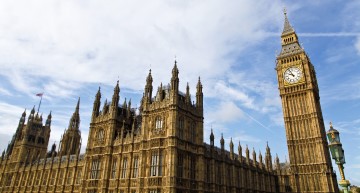10 years of auto enrolment.
31st October 2022

This October has marked the 10th anniversary of auto enrolment. Jonathan Watts-Lay, Director, WEALTH at work, a leading financial wellbeing and retirement specialist, answers some key questions on the topic and gives his thoughts on how the cost of living crisis could impact pension savings.
Q: What is ‘auto enrolment’?
A: Automatic enrolment is when an employee who meets certain requirements is made a member of a workplace pension scheme, without needing to request to be part of it. Since the introduction of auto enrolment in 2012, UK employers are now legally required to set up a workplace pension for their qualifying employees, and contribute to it.
Qualifying employees includes full-time and part-time workers, aged between 22 and state pension age, earning more than £10,000 p.a. Auto enrolment requires a minimum combined contribution of 8%. Employees are generally required to contribute 5%, however may be able to contribute less if the employer chooses to contribute more than 3%.
More than 10.7 million employees have been automatically enrolled into workplace pensions as of June 2022.
Q: What has been the impact of rising living costs on pension savings?
A: Figures from the Department for Work and Pensions show that there has been no significant rise in people choosing to stop contributions who are currently saving into workplace pension schemes. However, there does appear to be an upward trend for those newly enrolled choosing to opt out. As the cost of living crisis continues, employers should closely monitor pension opt out requests and do all they can to ensure pension scheme members recognise that it really should be a last resort.
Q: What are the risks of cutting back on pension savings?
A: When someone opts out of the pension scheme, or reduces their contributions, they are likely to make relatively small cost savings each month, but the impact on their retirement savings in later life will be dramatic due to lost employer contributions and tax relief.
It is understandable that people may look at their pension contributions as a way of cutting back on their monthly costs. But opting out of your pension will have a huge impact in the long term, and really has to be an absolute last resort. If people are considering this, making the smallest reductions in pension contributions possible, and avoiding opting out altogether, will limit the reduction to future retirement savings. Saving money is a habit, and once you stop it, it is very difficult to start up again.
Before reducing or stopping contributions, people should make sure they check all their outgoings to find other ways to save money first e.g. cancelling any unused subscriptions or memberships, shopping around for better deals on insurances at renewal such as car and household as well as broadband and mobile suppliers, and switching brands on their regular shop. Also, discount vouchers are often available online, and discount schemes may also be available through employers.
Q: How much should I be saving for retirement?
A: It can be difficult to judge how much you may need to save for retirement as everyone has different circumstances and different expectations. There is much confusion about this and WEALTH at work’s survey found that nearly a third (32%) of working 18-34 year olds know they should be saving more for their retirement and only 16% believe their savings are on track for a comfortable retirement. More than a fifth (21%) have no idea how much their pension is worth, with almost a quarter (24%) having no idea how much they will need to have for a comfortable retirement.
People need to look at their pension statement, and understand the pension income they are likely to retire on based on their current contributions, and if this matches their expectations or if they need to save more.
It can be helpful to understand what level of income you may need in retirement. Accordingly to the Pensions and Lifetime Savings Association (PLSA), a single person will need about £11,000 a year to achieve the minimum standard of living (this would cover all a retiree’s needs plus enough for some leisure activities such as a week’s holiday in the UK and eating out occasionally); £21,000 a year for a moderate standard of living (a two-week holiday in Europe and more frequent eating out); and £34,000 a year for a comfortable standard of living (this would cover all a retiree’s needs plus enough for some leisure activities such as a week’s holiday in the UK and eating out occasionally). For couples, it’s £17,000, £31,000 and £50,000, respectively.
Q: Is saving the minimum pension contribution of 8% really going to be enough?
A: The PLSA believes that the Government should increase the level of automatic enrolment contributions to 12% by the early 2030s.
However, it could be difficult against the backdrop of the cost of living crisis for an increase to be introduced when some people are genuinely struggling to pay their mortgage or rent and put food on the table.
Q: Should the auto enrolment age and earning limits come down?
A: One way to enable even more people to save into their pension through auto enrolment would be to reduce the auto enrolment age, and the earning limit.
A government study revealed that over two-thirds of employers are in favour of lowering the age at which people are automatically enrolled into a pension from 22 to 18, which is in line with a recommendation by The Department for Work and Pensions in 2017.
Q: What about when people move jobs? Are there any issues around people having multiple pension pots?
A: Having multiple pension pots is unlikely to be beneficial for most people.
Firstly, there are flat rate charges for schemes with more than £100 in, so people could be getting charged for multiple pots which could quickly diminish their savings.
Also, different pots could each have different investment strategies, and potentially different default retirement ages. It is important for people to understand the significance of making sure their investment strategy and expected retirement age reflect their plans.
It is also a challenge administratively, as people need to update each pension provider as their plans change. When moving house for example, they would need to inform each pension provider with their new address to ensure they are receiving the communications. This could require getting in touch with multiple pension providers.
Consolidating pensions into one pension pot can make it easier for someone to manage their finances, rather than having to check the performance of multiple accounts. To go about this, individuals should get in touch with the pension provider they intend to switch to. If someone is changing jobs, it is important that they know not to transfer their existing pension until they have left, to ensure they receive all their employer contributions.
Q: Do you have any final thoughts?
A: Overall, auto enrolment has been a great success but more needs to be done to ensure people understand how valuable their pension savings are, as well as how to make the most of them. For example, someone in their 20s, saving an extra 1% a year with their employer matching this, may be able to increase their pension pot in retirement by 25%. It is also crucial that people understand the damage they are doing to their standard of living in retirement if they reduce their pension contributions now. They are likely to make relatively small savings each month, but the impact on their retirement savings in later life will be dramatic due to lost employer contributions and tax relief, and this really should be a last resort.
Many employers now offer their workforce support including financial education and guidance to help them understand their pensions and workplace savings, as well as how to best manage their money in times of crisis. Individuals should speak to their employer to find out what help is available.
Links to websites external to those of Wealth at Work Limited (also referred to here as 'we', 'us', 'our' 'ours') will usually contain some content that is not written by us and over which we have no authority and which we do not endorse. Therefore please be aware that we do not accept responsibility for the content of any third party site(s) except content that is specifically attributed to us or our employees and where we are the authors of such content. Further, we accept no responsibility for any malicious codes (or their consequences) of external sites. Nor do we endorse any organisation or publication to which we link and make no representations about them.


